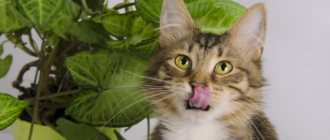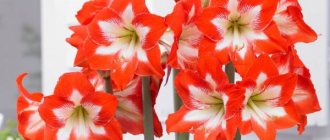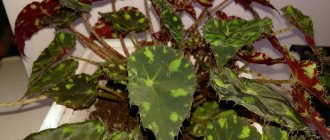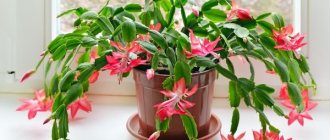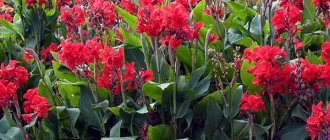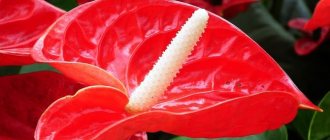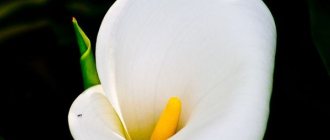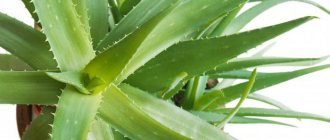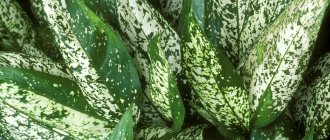Author: Elena N. https://floristics.info/ru/index.php?option=com_contact&view=contact&id=19 Category: Houseplants Published: January 20, 2019Last edits: October 16, 2021
- Growing from seeds
- Insect pests
- Fleshy Hoya (Hoya carnosa), or waxy Hoya
plant (lat. Hoya) , or, as we call it, wax ivy , belongs to the genus of evergreen shrubs and vines of the subfamily Lastovnevye, family Kutrovye. More than two hundred species of hoya grow in the tropics of South and Southeast Asia, Polynesia and the west coast of Australia. Hoya liana prefers open forests, in which it finds a tree for support, or rocky slopes. The Hoya flower was named by the famous Scottish scientist Brown, the author of the theory of “Brownian movement”, in honor of his fellow English gardener Thomas Hoy, who devoted his life to growing tropical plants in the greenhouses of the Duke of Northumberland.
Planting and caring for hoya
- Flowering: in spring and summer, sometimes again in autumn.
- Lighting and watering: for species with succulent leaves - bright sunlight and moistening the substrate after the top layer of soil has dried; for varieties with light green pubescent foliage - bright sunlight and frequent watering; for species with thin leaves - bright, diffused light and frequent watering; for plants with dark green pubescent leaves - shade and frequent watering.
- Temperature: 17-25 ˚C in summer, 10-15 ˚C in winter.
- Air humidity: for species with succulent and pubescent leaves, this indicator is not important, but it is advisable to spray thin-leaved plants in extreme heat.
- Fertilizing: If you regularly change the substrate, fertilizing is not necessary, but if necessary, apply fertilizers for succulent plants.
- Rest period: not clearly expressed.
- Replanting: young plants - annually, adults - once every three years, if necessary.
- Reproduction: seeds and cuttings.
- Pests: aphids, scale insects, red spider mites, whiteflies and nematodes.
- Diseases: root rot, powdery mildew and gray mold.
- Properties: The aroma of hoya flowers can cause headaches.
Read more about growing hoya below.
Botanical description
In nature, an adult plant can reach 10 meters in length. Leafless young shoots have a violet-brown tint, but as they grow older, when leaves and aerial roots begin to appear on them, the shoots turn green and become woody over time. Fleshy and shiny at a young age, the leaves gradually become dull; they are oval in shape and pointed towards the top. The leaf size is 5-8 cm in length and 3-5 cm in width. Hoya flowers, white or pinkish, bisexual, star-shaped, are collected in umbrellas located on stem branches. The diameter of each flower is 1-2 cm, except for the flowers of Hoya imperialis, which reach 8 cm in diameter. In the center of the corolla of the flower there is a five-membered crown, rising above the petals. The flowers are fragrant and produce nectar that attracts insects.
In culture, hoya can bloom only in brightly lit windows; in addition, the plant has become so domesticated that it no longer needs to be in the fresh air even in the warm season. Indoor hoya is divided into three categories:
- ampelous hoya, or hanging;
- hoya ivy wrapping around the support;
- erect hoya forming a bush.
Caring for Hoya at home
Growing conditions
Different types of hoya are grown in culture, and each requires fulfillment of its own conditions of maintenance, so it is difficult to give general recommendations for all types. The only wish common to all plants of the Hoya genus is to avoid overmoistening the soil, as a result of which liquid mud forms in the roots.
- About the benefits of indoor flowers
For convenience, we divide hoyas into categories according to the amount of moisture consumed and the required level of lighting:
- Indoor Hoya flower with hard succulent leaves (Hoya fleshy, Hoya Kerry). The optimal location is on a south window, under the rays of the sun. Watering is carried out after the top layer of the substrate has dried. An exception is southern hoya (Hoya australis), which needs constantly moist (but not wet!) soil.
- Types and varieties of hoya with thin leaves (Hoya multiflorum) require constant moisture in the earthen ball and shading from direct sunlight; the ideal place for them is an eastern or western window, and they will do well on a northern window.
- The Hoya houseplant with light green, hairy leaves (Hoya lineara) grows best in full sun and requires regular watering without drying out the clump.
- Hoyas with dark green pubescent leaves (Hoya Thompson, Hoya serpentine) love shady coolness and regular watering without drying out the earthen ball.
As for the comfortable temperature for Hoya, in summer it is 17-25 ºC, and in winter - not lower than 10 ºC, although it would be better a little higher - about 15 ºC. The exception is the beautiful hoya (Hoya bella), which loses its leaves from the cold.
At home, Hoya does not have a pronounced dormant period, but if you notice that the plant has slowed down, reduce watering and stop feeding - let the Hoya rest. Hoya usually stops growing when the daylight hours become short, but if you decide on additional lighting for the plant, the hoya may skip the dormant period.
Fertilizer
In nature, different types of hoya grow in different places, in different soils, and therefore need different types of fertilizers. But according to many observations, the results of which have been published, it is best to feed hoyas with fertilizers for flowering succulents - all species respond well to them. And if you regularly replant the hoya into fresh substrate, then you don’t have to resort to fertilizing at all.
Transfer
Young plants are replanted annually in the spring, and adults - once every three years, if necessary. Hoya does not need a large pot, but buy a new pot for replanting every time - the one left over from some other plant is not suitable. And even a new pot, before transplanting the hoya into it, must be thoroughly washed with ordinary soap, and the substrate must be sterilized.
The soil for hoya needs to be breathable, neutral or slightly acidic, preferably of the following composition: one part of humus and leaf soil and two parts of clay-turf, but many grow hoya in an orchid substrate and even just in garden soil - it all depends on the type of hoya, so approach plant replanting creatively, having first studied the conditions and soil in which your Hoya grows in the wild. A layer of drainage is placed at the bottom of the pot, and the plant is transferred to a new pot along with a lump of earth.
Is wax ivy harmful to health?
Regarding human health, prejudices towards hoya can be reduced to two categories:
- the plant brings illness into the house;
- If you fall asleep in a room with waxweed in bloom, you can die.
Scientists have established that there are no toxic substances in the foliage, stems, roots and flowers. It will not be possible to suffer serious damage to your health while sleeping in a room with hoya - the aroma of the flowers is absolutely harmless, unlike lilies. These flowers actually absorb oxygen. Therefore, in a few hours at night they will saturate a closed room with carbon dioxide, which, of course, will not please your lungs.
At the same time, the pleasant smell of hoya is quite piquant and strong. In large quantities it can cause mild dizziness. Therefore, it is not recommended to place the flower in small enclosed spaces: offices, bedrooms, etc. In a spacious living room, it will smell completely harmless to others.
Advice. Of course, it is undesirable for people suffering from allergies to flowers to be near blooming waxweed.
Hoya propagation
Growing from seeds
How to propagate hoya if you happen to be the owner of a rare treasure - hoya seeds? Ripe and well-dried hoya seeds in the year of their collection are sown in a loose substrate consisting of an earthen mixture and chopped sphagnum moss. The seeds germinate within a week, and as soon as the shoots appear, you must ensure that the soil in the crops never dries out and at the same time is not wet. Keep the bowl with seedlings in a warm, bright place.
- Pomegranate: growing at home
To prevent fungal diseases, spray the seedlings with Bordeaux mixture or any other copper-containing preparation in strict accordance with the instructions. After 90 days, when the seedlings produce several pairs of leaves, they are planted in personal pots. However, growing hoya from seeds is made difficult by the fact that seed material cannot be found on sale, and it is almost impossible to obtain seeds from hoya growing at home.
Propagation by cuttings
This is the easiest and most reliable way to get a new plant, since Hoya cuttings take root easily. The stalk should be short, but have at least two nodes and one or two pairs of leaves. You can root cuttings in water or in a substrate. To root in water, wrap the container with foil on all sides, making holes for the cuttings. Leave only the top pair of leaves on the cuttings, treat the lower sections with rooting hormone and push the cuttings through the holes in the foil to such a depth that the lower node is in the water.
The temperature for rooting should not be higher than 22 ºC, but high air humidity is also important for this process, otherwise the cuttings will simply wither. To increase air humidity, place a transparent plastic bag over the container with cuttings, but do not block the air access underneath it. Hoya rooting occurs after two weeks, and it is important to transplant the cuttings to a permanent place at an early stage of root formation, otherwise the cuttings become fragile and break.
How can you root Hoya directly in the substrate? The soil for rooting must have such permeability that excess water can easily flow through it. Before planting, treat the lower cut of the cuttings with root. Sterilize the substrate and pot, place the cutting in the soil to such a depth that the bottom node is in the soil. If the air humidity in the room is low, place a transparent bag loosely over the pot with cuttings. After 2-3 weeks, signs of new growth should appear. If you received cuttings for rooting in the mail and it seems to you that they are too dry, soak them for several hours in slightly sweet water and they will restore their moisture.
What to do to see the blooming flowers?
To understand why your pet does not bloom, you need to analyze every factor in caring for the plant and find errors in them that should be eliminated immediately.
Flowerpot size
The reason may be due to excess space. There shouldn't be a lot of it. The pot should be as small as possible. Ideally, the root system should be even a little cramped in its “home”. You can avoid replanting Hoya for at least five years.
Lighting
There should be a lot of light all the time. But if you place the flower on the south side of the room in the summer, make sure that you have the opportunity to shade the ivy during the hottest rays. Use reflective foil or just a sheet of paper for this. Experienced people recommend avoiding open air for this vine.
Proper watering
Rare watering is considered correct.
But if we talk about the cold season, then in this case you should not rush to water even after the soil has completely dried out.
Good drying of the soil and root system in winter is the key to abundant flowering of hoya in summer.
Wintering
At this time of year, you need to give the plant the opportunity to rest and gain strength for the new season. In winter you need to provide the following conditions:
- minimal soil moisture;
- reducing fertilizing to nothing;
- reducing the room temperature to 10-14 degrees above zero.
Substrate
The soil must be loosened, soft, and breathable. To properly prepare the soil for wax ivy, take ready-made store-bought substrate, peat and sand in equal proportions.
Top dressing
It should not be frequent in any season. In addition to ready-made complex fertilizers, gardeners recommend feeding the vine with mullein. Such nutrition will have a positive effect on subsequent flowering.
Age
This factor must be taken into account while waiting for the first flowers from hoya. After all, young plants will not be able to bloom. This process should take a couple of years. Flowering in the first year of “life” is extremely rare.
"Bathhouse"
This method of making a vine bloom is considered extreme.
What needs to be done for this?
- In autumn or winter, place the ground part of the ivy in water heated to 35-40 degrees for about half an hour.
- Soil with the root system in the same water - for an hour and a half.
This process activates all life processes of the plant, including flowering.
If the result is not noticeable the first time, you can repeat the procedure, but not earlier than six months later.
Hoya pests and diseases
Insect pests
Hoyas are very resistant to all troubles, but if they grow in unsuitable conditions and are poorly cared for, then the plants may have problems with scale insects, aphids and red spider mites, the fight against which consists of treating the hoya with actellik or some other insecticide, but species and varieties with thick leathery leaves can be saved from pests by wiping the leaves with a swab dipped in alcohol. And so that the hoya is not pestered by nematodes, the soil and pot must be sterilized when replanting the plant.
Why doesn't hoya bloom?
Usually the reasons why hoya refuses to bloom are overwintering in a too warm room, excessive fertilization, too much pruning or insufficient lighting.
How to make hoya bloom
What to do if hoya does not bloom? Correct mistakes in care: let the plant rest in the winter in a cool room - on an insulated, unheated loggia or balcony, reducing watering and stopping fertilizing, and in the spring bring the hoya into a warm place under bright, diffused light, resume watering and fertilizing. Also make sure that the hoya pot is not too large - for an adult plant, 15-20 cm in diameter is enough.
- Propagation by cuttings
Hoya turns yellow
If your plant suffers from too much heat or insufficient light, its leaves will turn yellow. Decide for yourself how to deal with this by once again studying the rules for keeping hoya at home.
Is it possible to keep Hoya at home?
Most often, Hoya is grown not in apartments, but in offices and studies, and the reason for this is superstition. For a long time, people believed that wax ivy survives the husband’s family and drives adult sons out of the house. Other, no less convincing sources claim that hoya relieves feelings of resentment and pacifies envy. There are publications that say that hoya is “a plant of family happiness, it is advisable to place it in the bedroom.” What to believe? Maybe it’s worth trying to grow hoya at home and clarify the degree of its influence on a person’s destiny? You decide. I see in hoya only a cozy plant with beautiful flowers, caring for which is a pleasure.
Watering a flower
When it is very hot, this flower needs to be watered abundantly, because it is precisely at this time that it grows. But in autumn and winter this is done less. Watering should be done with settled and soft water when the soil on top dries out.
To induce flowering, the plant can be placed in a bucket filled with warm water at 30-35°C. You need to fill it to the top of the pot and leave it there for 1 hour. After this, the container with the flower is removed and placed in the place where it already stood.
Types and varieties
Not so long ago, only Hoya carnosa, or Hoya fleshy, and Hoya bella, also known as Hoya beautiful, represented the indoor plant Hoya in cultivation.
Fleshy Hoya (Hoya carnosa), or waxy Hoya
An evergreen climbing plant, reaching a length of 6 meters and requiring support. Fragrant flowers, white with a pink crown in the center, are collected in a rosette. It has small oval leaves, thick and tough, covered with a waxy coating and silvery markings on a dark green background.
Although there are varieties of this species:
- Hoya variegated (for example, the Crimson Queen variety with a cream border along the edge of the green leaf);
- Hoya tricolor - the “Exotic” variety with scarlet flowers, and the leaves, in addition to green, are colored in cream and pink shades;
- Hoya compacta is a variety with small leaves and barely noticeable patterns on them.
Hoya bella
A branching shrub with small, ovate-lanceolate, densely growing leaves on hanging shoots. The flowers of this species are so perfect that they seem like jewelry - small white stars with a purple crown, collected in umbrellas of 7-9 pieces. The leaves, depending on the variety, can be solid green or variegated. Hoya beautiful is often grown as an hanging plant.
In addition to these two well-established species in culture, today they are becoming increasingly widespread:
Hoya multiflora, or multi-flowered
A climbing plant with oblong-linear leaves and numerous yellow flowers with narrow petals and a crown with arched spurs;
Hoya majestic (Hoya imperialis)
In nature, it is a shrub with oval-oblong leathery leaves 15-20 cm long on pubescent cuttings 5-7 cm long. The shoots are also pubescent. Fragrant flowers, collected in umbels of 6-10 pieces, with a short pubescent crown, dark red on the inside and yellow-green on the outside;
Hoya lacunosa, or concave (Hoya lacunosa)
In nature, it is an epiphyte; in culture, the shoots look like densely growing cascades of lashes, covered with dark green diamond-shaped leaves up to 6 cm long with curled edges, which is why the leaf plate appears concave. Young shoots have a red-brown tint. The flowers collected in umbels have a white fleecy corolla with a yellow center;
Hoya Kerry (Hoya kerrii)
It has leaves shaped like a heart, which is why it is called “Valentine” or “hoya in love.” The stems have to be tied up to prevent them from falling. The leaves are succulent, length and width from 5 to 15 cm. The pubescent flowers are collected in 15-25 pieces in spherical umbrellas, their color depends on the amount of light in the room where the hoya grows: white with a barely noticeable lemon tint, yellowish, yellow-lemon or soft pink. Move the flower further away from the window or, conversely, closer to it, and the shade of the flowers will change. Moreover, as it ages, due to the dark-colored nectar, the flower’s petals become pink, then dark pink, then red-brown.
Hoya serpentine (Hoya serpens), fragrant hoya (Hoya odorata), cupped hoya (Hoya calycina), Hoya mindorensis (Hoya mindorensis), southern hoya (Hoya australis) and others are also known in culture.
Feng Shui use
The plant has soft positive energy that can neutralize negative emotions, effectively calm a person, and set him up positively. Hoya can be placed in different parts of the house (preferably at the entrance of the room) - depending on what the owners want to achieve:
- It is not for nothing that wax ivy is called the flower of family happiness. One variety of hoya called Heart of Kerry has leaves in the shape of a heart, symbolizing love. By placing such a plant in the bedroom, you can harmonize the relationship between spouses, add passion to them, and improve family life.
- A pot of hoya flower at the door of the children's room will help children become more independent.
- If you place the plant in the middle of the living room, then its energy will help the owners of the house recover faster from hard work.
- Finally, ivy can be brought to work and kept in the office. Hoya will help improve relationships with colleagues and alleviate work conflicts.
Of course, whether or not to keep decorative ivy at home is up to each individual to decide. It has many more positive properties than negative ones: hoya perfectly purifies the air, saturating it with oxygen, decorates the interior, ivy leaves are used to treat furunculosis.
Of the negative properties, it is only worth mentioning that hoya has a strong specific odor that can cause allergies during the flowering period in those who suffer from respiratory diseases. Keeping this plant in tight confined spaces is not recommended. In addition, you should not allow hoya juice to come into contact with the skin, which can also cause allergies. Otherwise, wax ivy can only deliver positive emotions. If you set yourself up correctly and start believing in positive signs, the plant will strengthen your family and improve relationships with others.
